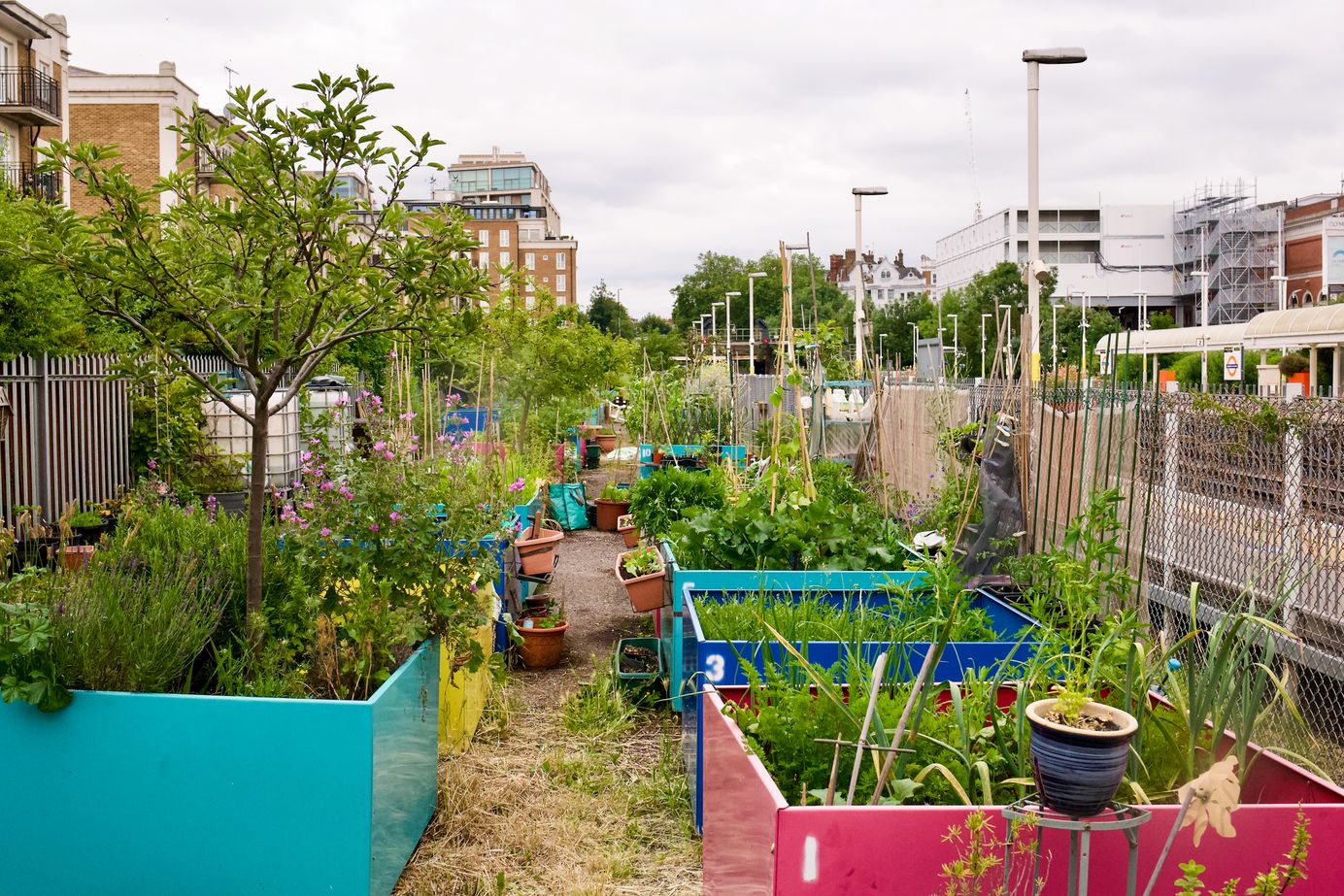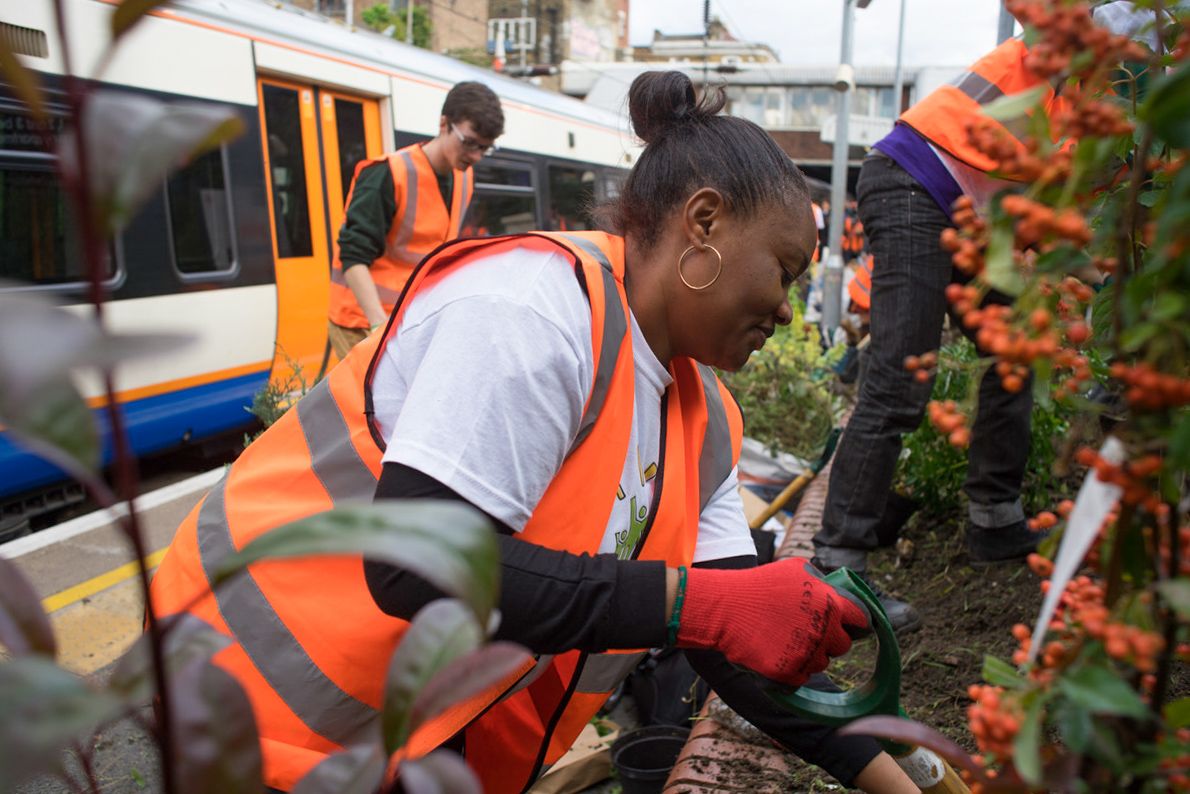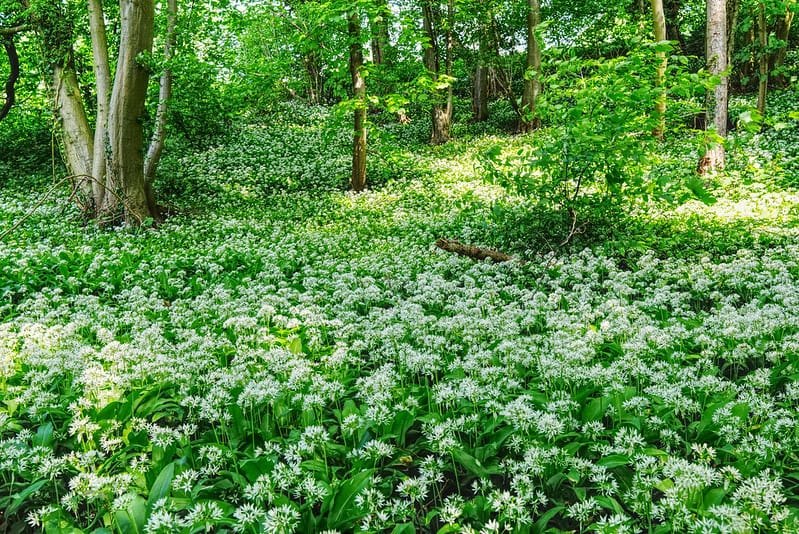
In grey city spaces, a greener future is growing
Urban agriculture is springing up in London's wastelands. But will the city ever be able to feed itself?
Modern cities act as ecological vampires, drawing life from the land beyond their bounds.
Growing urban populations are largely nourished by food grown elsewhere, in once-wild places given over to field and pasture. City lights twinkle thanks to electricity generated by coastal power plants, rural solar farms, and turbines atop windy hills. Fed by the countryside, the city’s circumference inches outwards, displacing the non-human life that once thrived in the land around it.
Currently, around 84 percent of the UK’s population – some 56 million people – live in urban areas. That’s an increase of around 15 million since 1960. While compact city life is, in many ways, more efficient than country living, its demands nonetheless exceed its physical capacity. One study, published around 20 years ago, calculated that the equivalent of 40% of Britain’s productive land was required to feed the population of London.
We all need to eat, and most people enjoy the benefits of electricity on demand. But perhaps it is time that cities began to generate more of their own supplies: more food and more power. Is there room for humans, plants and animals to co-exist amid the concrete and asphalt?
If you commute from Crouch Hill Station, in North London, you might be persuaded that the answer is yes.
The transformation of this particular corner of the Overground began in 2018: since then, some 400 square metres of rubbish-strewn trackside has been transformed into space for herbs, food and flowers. "We’ve now got tomatoes, potatoes, sweetcorn, courgettes, pumpkin and sunflowers," says Ed Herten, who helped to set up the garden. "It’s very visual and deliberately so – so that people would see it and start asking questions about it."
Crouch Hill is part of the Energy Garden network – a community-led organisation that is bringing joy, colour and solar panels to the London Overground. Since 2011, volunteers have established 34 gardens across stations around the city. A commuter from Hackney Downs might find themselves standing next to a ripening tomato as they await their train, for instance; and at Brondesbury Park, an early crop of plums is destined to become sauce.
Local groups decide what happens to their produce. Some is preserved and shared at an annual Harvest Party. Some people take their crops home to cook. Anything that would otherwise go to waste is sent to food banks.
Access to platforms is granted by rail providers and local authorities. In return, Energy Garden provides the transport network with happier Londoners. According to Transport for London, stations with a garden consistently have the most satisfied customers. Further research found that the gardens saved the NHS more than £161,000 per year in mental health services.
"It is having a major impact both visually, financially and psychologically,” says Agamemnon Otero, founder of Energy Garden. “Growing vegetables allows people to engage with the natural world in a healthy and empowering way. They become a vehicle to form communities and better urban spaces.”

The new landscapes created by Energy Garden contain echoes of the past. Cities haven’t always been so detached from their life support systems. Ancient and medieval cities often incorporated spaces for food production, ensuring that supplies were available in times of hardship.
Pre-Columbian Maya cities, sometimes known as “garden cities”, contained large areas devoted to agriculture, which ensured energy-efficient nourishment at a time when wheeled vehicles and draft animals were in short supply. Later, in 7th century Constantinople, food production and grain supplies shifted to household farmsteads known as oikos, helping its population to weather harvest failures, regional political turmoil and other supply issues.
Fast-forward to the twentieth century, and cities were once again realising the virtues of urban food production. By 1918, towards the end of World War I, allotment gardens supplied city dwellers with two million tonnes of vegetables, helping to keep the population full when food was scarce. The Dig for Victory spirit was renewed during the early days of the COVID pandemic, when anxieties over food supplies – exacerbated by the sight of empty supermarket shelves – led to soaring interest in allotments.
But even before the pandemic, politicians were becoming increasingly alert to the benefits of urban horticulture for future food security. According to its Food Strategy, published in 2018, London contains some 79 hectares of urban space – just under 150 football fields – devoted to food production. The mayor, Sadiq Khan, pledged to encourage boroughs to use vacant land for food growing spaces in a bid to increase local harvests.
Even so, current provisions only represent a fraction of what scientists think could be achieved. Last year, a study focusing on Sheffield found that there was enough land within the city to produce fruit and vegetables to feed the entire population if these were grown using a combination of soil-based gardening and roof-based production.
Nor was Sheffield particularly unique in its horticultural capacity. “At a global scale, urban land area would be more than sufficient to meet the vegetable demands of urban populations,” the authors wrote.

For those wanting to brighten up the cityscape, travel infrastructure has offered rich pickings. Urban dwellers have become increasingly unwilling to cede valuable space to polluting vehicles, and are expressing this dissatisfaction in new and creative ways.
The concept of parklets, for instance, has challenged city councils to reconsider the spaces typically devoted to cars. The idea was born in San Francisco in 2005, when a design group called Rebar paid for a parking space and proceeded to lay out grass turf, seating and a tree – a tiny city park in a parking lot. When their ticket expired, they packed up their parklet and left.
It sparked a worldwide conversation and, in 2015, the first official parklet arrived in London, supported by Hackney Council. Last year, the climate charity Possible launched a Parklets Plotter, highlighting potential locations for new parklets, and have created a tool to help communities design parklet spaces that are meaningful to them.
"Our real aim with this project is tackling the inequality in public access to green spaces,” says Hannah Kettle, a campaigner for Possible. “Too much public space in our cities is dedicated to private vehicles, be it parking or driving. We want to give space back to people and nature by creating something that serves the local community.”
So if space isn’t the limiting factor, what is? Time, for one thing: it is much quicker to pop to the supermarket and buy a week’s worth of food than to lovingly raise a bushel of vegetables in your allotment or back garden.
But also money. Most urban horticulture is non-commercial. Growers tend to produce food for themselves, rather than sending it to market, which leaves gardeners to fund their own operations, including tools and compost. With its focus on community access, Energy Garden’s founder Otero Agamemnon was unwilling to charge volunteers – and that’s where the energy part of its mission comes in.
To date, solar power has played a small but significant role for Energy Garden, with off-grid panels installed at a handful of stations to power irrigation, mobile phones and fairy lights, while also engaging the wider public on sustainability.
Now, Energy Garden is scaling up this side of its operations, launching a city-wide community energy programme that they hope will fund the installation of 400 kWp solar panels on transport depots across London. The proceeds will help to combat climate change through generating clean energy, while providing a financial return to investors and helping to fund the maintenance of the gardens.
From nature’s perspective, there are good reasons for ensuring that urban horticulture is placed on a stable financial footing.
A study published last year showed that city-based production had various advantages over traditional – and particularly intensive – agriculture when it came to biodiversity. While urban food production from small landholdings tends to be labour intensive, growers often shun synthetic fertilisers and pesticides, leading to enclaves of life within the city environment. Production of urban food can also stem the expansion of more destructive agricultural practices in the countryside.
Self-sufficient cities remain a long way off, but there is growing evidence that such a revolution is possible and that the benefits would be myriad: for communities, for nature, and for food security. Such a transformation would require a massive upheaval in how we weave the urban fabric, rethinking everything from roofs to gardens to vacant space – and, already, communities are leading the way. A more colourful commute awaits.
Subscribe to Inkcap Journal to receive our weekly digests and support our independent environmental journalism. You can also support our work by making a one-off donation.
Subscribe to our newsletter
Members receive our premium weekly digest of nature news from across Britain.
Comments
Sign in or become a Inkcap Journal member to join the conversation.
Just enter your email below to get a log in link.








